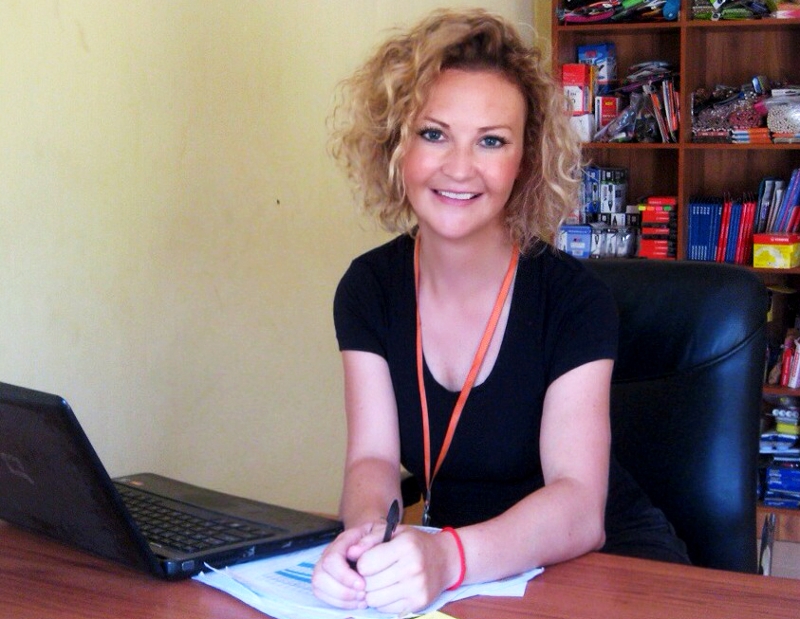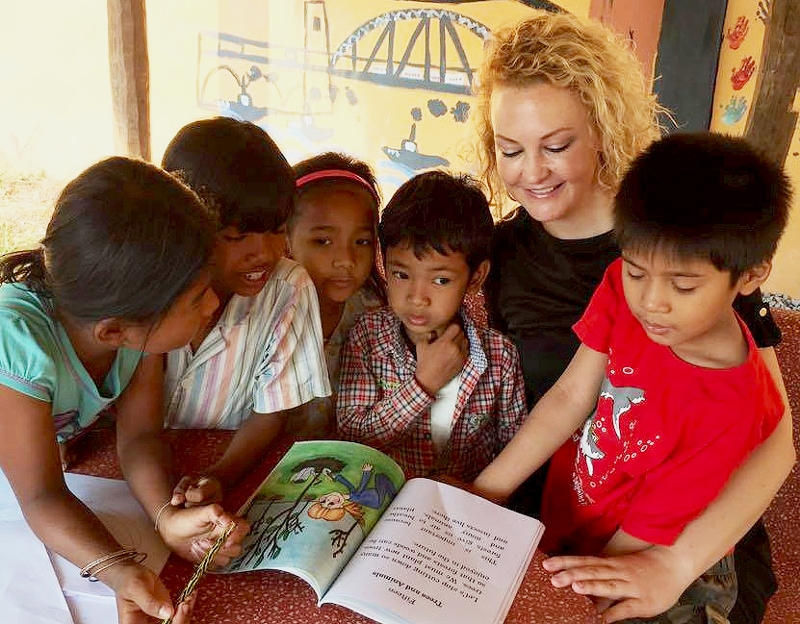By Bethany Romano
Arlene Gormley, MA-SID’16, is currently in her second year of the Heller School sustainable international development program and is conducting her practicum in Cambodia. Despite the distance, Gormley has self-published a children’s book called “2030 Not a Fairytale,” that explains the United Nations’ goals for sustainable development. Heller Communications spoke with her about the new book and her inspiration for creating it.

Tell us about your book.
“2030: Not a Fairytale” is about the UN Agenda for Sustainable Development, specifically aimed at young children. The 2030 Agenda for Sustainable Development includes a set of 17 Sustainable Development Goals (SDGs) to end poverty, fight inequality and injustice, and tackle climate change by 2030.
The SDGs were officially adopted at a UN summit in New York in September 2015, and became applicable in January 2016. UN member states are expected to use the SDGs to frame their agendas and policies over the next 15 years, with the deadline in 2030.
Those working in International development are well aware of the SDGs. However, one of the promises of the SDGs is to “leave no one behind.” Therefore, I felt it was imperative that if the SDGs are indeed going to impact every person on the planet, then the agenda needs to be understood by everyone. The official UN document is long and the wording is technical, so the aim of my book was to introduce the SDGs to preschool children through a colorful picture book with simplistic explanations of each goal.
What influenced you to write a children's book on the SDGs?
Last September, I was on a Skype call with my three-year-old niece, Zara, and she asked me to come home. She wanted to know why I was working in Cambodia and could not come home to Ireland to see her. I tried to explain to her the work that I do and more generally the concept of sustainable development, in the simplest terms but it was not that easy to do. So I decided to make her a book with illustrations, and sent it to her as a Christmas present.
I spent hours working on the illustrations – during this time, my colleagues asked me what I was doing with so many colored pencils! When I explained about my niece Zara and my idea to educate her about the UN Global Goals, many people contacted me to ask if they could obtain a copy. I was really surprised! These days it’s very easy to publish independently online, so I took a leap of faith and published “2030 Not a Fairytale.” The response has been incredible. The book is currently being read to children across America, Canada, Cambodia, Mongolia, United Kingdom, Ireland, Nigeria, Australia, New Zealand, Holland and Hong Kong.

How does this project relate to your interests as a Heller SID student and development professional?
As a student I have based my second year practicum on translating the SDGs to a country-specific context so that they can be made relevant to youth and to engage them in playing a role in the implementation of the SDG agenda. Through youth-based focus groups and individual interviews, we are discussing opportunities and potential barriers to Cambodian youth using the SDGs for advocacy, lobbying and action.
As a development professional I think it is imperative that people understand the world from early childhood. Why wait until children are eight or nine years old before discussing the real issues that they will face in a few more years? I think that we have a wonderful opportunity to use the brilliance of early childhood development as a platform for shifting our values. This, I feel, is how we can make real change.
Why are books like yours important?
Children are born into an uncertain and unequal world. Parents often worry, “what kind of world will my child grow up in?” I think it’s important to make children part of this conversation from the earliest possible time. Although it’s a simple picture book, “2030 Not a Fairytale” introduces young children to crucial issues.
I did not write “2030 Not a Fairytale” to promote or endorse the SDGs; nor did I intend to be critical of the agenda. At this stage no one can be certain how effective the implementation of the Agenda for Sustainable Development will be. Nevertheless, it has been agreed by 193 UN Member States meaning that for the next 15 years, whether you are a critic or advocate of the SDGs, the policies will affect your life in some form. I think it is important that everyone understands the commitments made under the agreement and the agenda their governments have ratified. Only then can young people hold their political representatives accountable and demand action.
Is this part of a larger project or series?
The process of translating complicated documents into simple and understandable terms has piqued my interest. I am interested in a Gene Sharpe’s “198 Methods of Nonviolent Action” and the second volume, “The Politics of Nonviolent Action.” Perhaps there is an opportunity for me to write and illustrate a book aimed at young children with those texts.
Of course there are other methods to enhance learning and understanding and I am interested in exploring those options further. Perhaps, after I submit my Masters paper in April I might sharpen my colored pencils and create a second book. I really enjoyed creating “2030 Not a Fairytale” and it is so encouraging to see how interested young children actually are about the pressing issues the SDGs seek to address.
Arlene introducing the book... Posted by 2030 Not a Fairytale on Thursday, February 25, 2016
